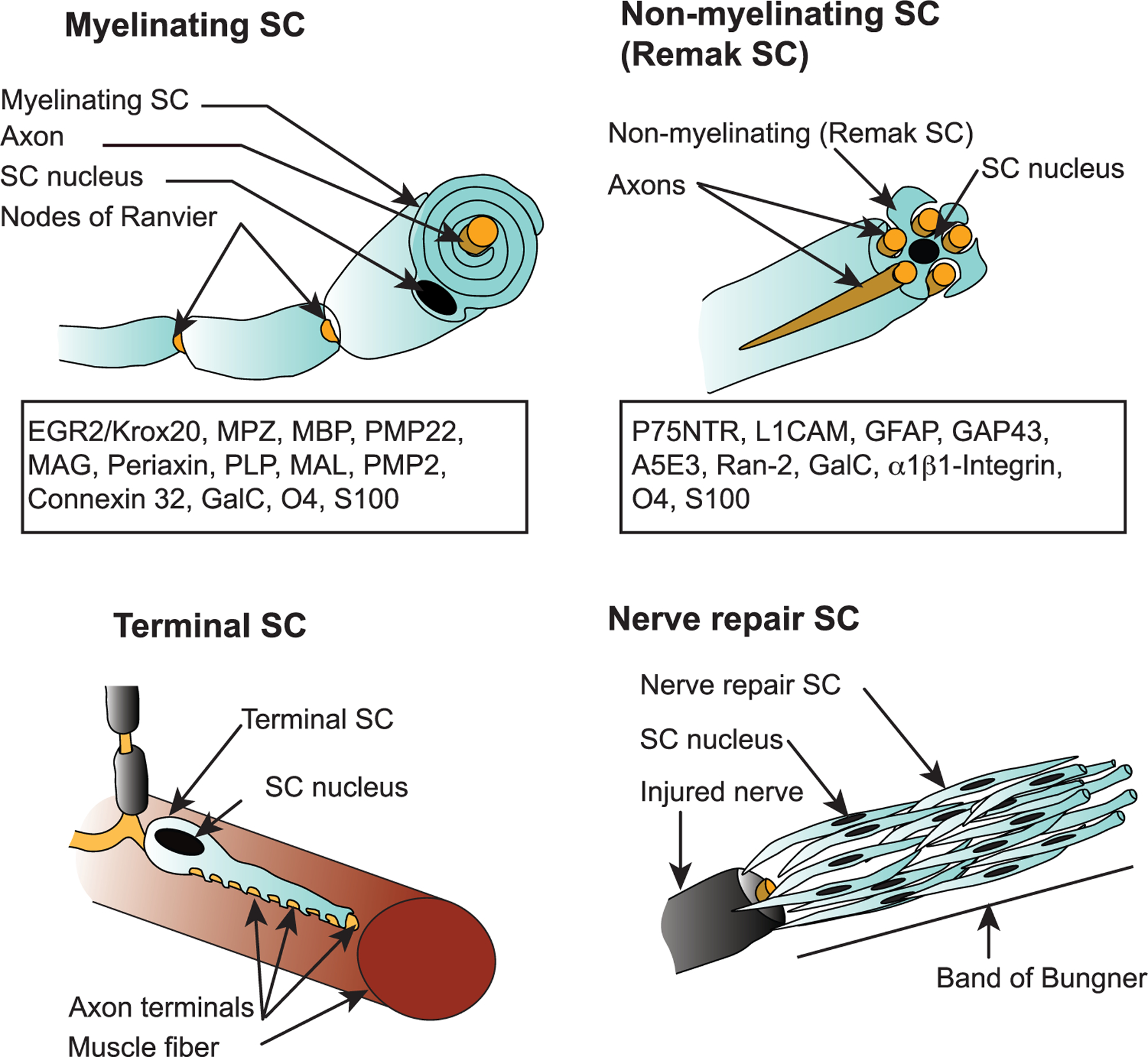Figure 1.

SC subtypes and their markers. Mature SCs comprise two major subtypes: myelinating and nonmyelinating SCs. Myelinating SCs produce myelin sheaths around large caliber axons and express characteristic markers, such as myelin protein zero (MPZ), myelin associated glycoprotein (MAG), and myelin basic protein (MBP). Nonmyelinating SCs or Remak SCs ensheath several smaller caliber axons and present markers corresponding to more immature state of SCs such as low affinity neurotrophin receptor p75 (p75NTR/NGFR) and L1 cell adhesion molecule (L1CAM). Terminal SCs are nonmyelinating SCs that surround axon terminals, for example at the neuromuscular junctions. Nerve repair SCs are nonmyelinating SCs that derive from myelinating and Remak SCs at nerve injury. They organize into bands of Bungner where they direct axonal regeneration. SCs in cancer tissue share strong similarities with nerve repair SCs. Early growth response 2: EGR2 (previously named Krox20): peripheral myelin protein 22: PMP22, proteolipid protein:PLP, Myelin and lymphocye protein: MAL, peripheral myelin protein 2: PMP2, Connexin 32, galactocerebroside: GalC, O4, glial fibrillary acidic protein: GFAP, Growth Associated Protein 43: GAP43, S100 calcium binding protein: S100, Oligodendrocyte marker O4:O4, GTP-binding nuclear protein Ran-2: Ran-2.[1]
